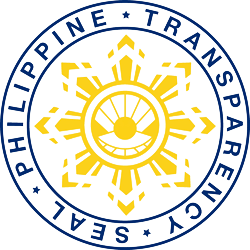1 December 2020 via Online
[Acknowledgements]
Ladies and gentlemen, good morning.
The country’s new investment promotion brand, “Make it Happen in the Philippines,” is more than just a brand or a tagline. It speaks of who we are as Filipinos and as a government. It highlights our genuine Filipino trait of resilience and “make it work” mindset that exudes strength and adaptability even in times of adversity.
The success of our repurposing manufacturing program is a testament to this mindset. It demonstrates the agility of Philippine industries to adapt to changing business environments, anchored on the country’s growing industrial baselines and ability to leverage a broader ecosystem or inter and intra-industry partnerships. From a production capacity of 2M pieces of surgical masks per month, we were able to ramp up our domestic production capacity to over 60M medical-grade face masks and on coveralls pre-COVID, from zero capacity to 3.2M pieces of medical-grade coveralls per month. Together, we made it happen!
“Make it Happen in the Philippines” is also a promise to Filipinos and anyone doing or wants to do business in or with the Philippines that we will BUILD BACK BETTER!
That is why we set out to implement REBUILD—our initiative which stands for “Revitalizing Businesses, Investments, Livelihoods, and Domestic Demand.” This is our economy recovery plan amidst the pandemic and is anchored on a vision of the President Rodrigo Roa Duterte to create a modern, dynamic, and responsible Philippines. It is aimed at jumpstarting and reinvigorating the Philippine economy by revitalizing consumption and enhancing production capacity.
The two broad strategies of REBUILD are to: (1) revitalize demand, and (2) empower local industries to capture the demand in the agriculture, industry, and services.
On the demand side, it starts with government support via economic stimulus to save thousands of companies to keep jobs. This is important to restimulate the purchasing power and demand to attract more production activities and create a better business environment for investments.
On the supply side, we should enhance production capacities in the agriculture, industry, and services sector to help build our export competitiveness and manage imports. This creates a dynamic cycle of sustained and growing economic activity with strong domestic linkages.
Hence, the infusion of more foreign direct investments (FDIs) plays a dual critical role in our country’s economic development. It addresses the supply chain gaps in production, and it also provides for the physical and digital infrastructure to enable the modernization of Philippine industries.
Rebuilding the robust growth of Philippines will start from the strategies outlined under the REBUILD initiative. This will hinge on key drivers that have enabled the Philippine economy to thrive in previous years.
With a stable and large domestic market of 110M people, our population is expected to grow by 16.8% from 2017 to 2026. We are in a demographic sweet spot with the average age of Filipinos being 24 years old, which means significant latent demand for goods and services in the country.
The Philippines also has preferential access in major markets thru our free trade or preferential trade arrangements with ASEAN, Japan, Korea, China, India, Australia, New Zealand, EU, EFTA, Russia, US, and Canada.
The recent conclusion of the regional mega free trade agreement, the Regional Comprehensive Economic Partnership (RCEP), is further expected to strengthen the Philippine advantage. This agreement signals a renewed vow in a rules-based system for trade and investments in the region and with our key trade partners: Australia, China, Japan, Korea, and New Zealand. It covers not only the usual areas of trade in goods and services, investment, and economic cooperation, but also emerging trade areas such as intellectual property, electronic commerce, government procurement, and competition.
Moreover, the country has been a reliable manufacturing base for export-oriented industries. The Philippines has veered away from the imposition of export restrictions, even for critical medical products during this pandemic. Instead, we capacitate manufacturing firms to enable them to support both domestic and foreign demand.
As a testament of our “make it happen” brand, we have a large pool of skilled, trainable and cost-efficient workforce who are also competent, hardworking, and loyal. Among the ASEAN Member States (AMS), the Philippines produce among the highest number of tertiary graduates, most of which are into engineering, IT-related fields, medicine and health-related fields, and agri-forestry.
Prior to the pandemic, the Philippines had very strong economic fundamentals. We were growing at an average of 6.6% over the period of 2016 to 2019. The Philippines was also the 3rd fastest growing economy in Asia. In 2019, our per capita GDP stood at US$3,400-3,500, and we were projecting to breach the US$4,000 mark to become an upper-middle income country by 2020 if COVID-19 did not happen.
Our astute monetary policy enabled us to have low and stable inflation rates averaging at 2.5% in 2019. Last year, we had a strong fiscal position, whereby we achieved highest revenues and lowest debt as shares of GDP. We also had among our lowest unemployment rate at 5% level in 2019, and we even received the highest ever credit ratings in the range of BBB+ to A- from credit ratings agencies.
Because of COVID-19, lives were lost, the health of many of our people suffered, livelihoods were affected, and the dreams of many were put on hold. We owe it to our people—every Filipino and every investor who has put their trust and faith in the Philippines—to REBUILD a better economy. We will make it happen! With the passing of the CREATE bill, we expect more great things for the country to happen.
The Philippines is working on a V-shaped economic recovery. We expect to sustain this towards the end of the year and look forward to a stronger recovery in 2021. Moody’s recently recalibrated our GDP forecast for our country to a robust 7.8% for 2021 instead of the original 5.2% projection.
Our export performance, after dropping by half in April of this year, is already better than last year, at positive 2% growth rate by September, driven by increase in the export of copper and other mineral products, chemicals, and electronic products.
Furthermore, our Net Foreign Direct Investments (FDIs) went up from 41% as of July to 47% last August, and this has been growing for four consecutive months.
The country is also lining up the production of 10 new vehicle models even in the midst of pandemic.
In DTI, we recorded a 12% increase in the number of business names registered for the first 8 months of the year, compared to the full year of 2019. Online businesses registered leapfrogged from 1,700 in March to 87,000 by November. This is a clear indication of the adaptability of Filipinos in challenging times.
The investment approvals registered by the Philippine Board of Investments (BOI) is on track to hit Php1T for the year, the second highest mark in the agency’s history. For the first three quarters for 2020, investment approvals already reached over US$15B. Our Philippine Economic Zone Authority (PEZA) has also registered a 43% increase in investments in our export-oriented IT-BPM industry.
There are 90 Notable Investment Leads with High Probability of Completion, valued at $24.1 Billion, generating 134,855 jobs. There are also 73 target investment leads that DTI will invite directly, coming from the US, Malaysia, Japan, China, Taiwan, and Europe.
We also would like to point out that the Philippines has risen in the Global Innovation Index (GII) 2020 to 50th out of 131 countries from 54th in 2019. This is the first time that the Philippines has reached the top 50. Moreover, the GII recognizes the country as an innovation achiever for the second year in a row. From 2014, we were just in the 100s and now we are in 50th rank.
Just recently, our country got a much-needed boost as we are ranked among the safest economies in the world. The Philippines placed 12th among the 50 countries based on the highly respected Gallup’s 2020 Global Law and Order Report. It’s worth noting that we are at the same level as Australia and New Zealand. As such, foreign investors would surely take notice of this development and take advantage of potential opportunities in the country.
We look forward to the virus being contained, along with our fiscal support reawakening to revitalize and bolster our economy. As we promote our country in the face of the expected global recovery, we can tap the emerging opportunities and challenges from shifting trade and investment preferences and changing forms of international production. This will be made possible as we continue to fast-track our industrial strategies with re-skilling and upskilling of our workforce along with adapting new technologies. With a more resilient, inclusive and sustainable effort, we are gearing up for a dramatic recovery next year.
Our ultimate goal is that with your support, our country’s economic growth story will continue even better in a post-COVID future. Through the jobs and employment generated by business and investments, our people can gain a better and more comfortable quality of life as promised by Philippine President Rodrigo Roa Duterte.
We are confident that the launch of the “Make it Happen in the Philippines” campaign will relay a clear message across the world that the Philippines is dynamic, agile, and resilient. Now, more than ever, we are ready to roll up our sleeves and make things happen for you.
Thank you and let’s MAKE IT HAPPEN IN THE PHILIPPINES! ♦
Date of Release: 01 December 2020



